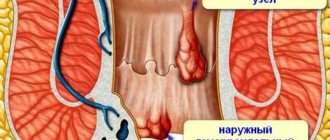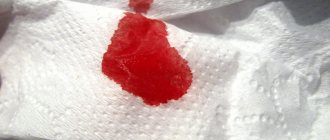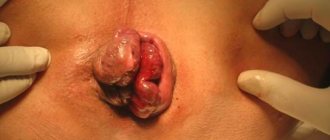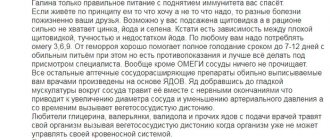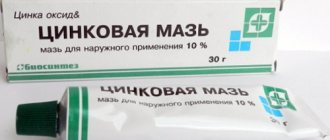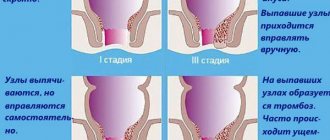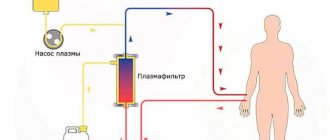According to statistics, more than 20% of adult patients suffer from hemorrhoids and every year this figure is rapidly increasing. Patients over 45 years of age are at risk, but recently the disease has been diagnosed in younger patients. The pathology causes unpleasant symptoms and dangerous complications (thrombosis, strangulation of hemorrhoids, iron deficiency anemia). Therefore, treatment should be started when the first symptoms appear. Only in this case will the treatment be simple and effective.
Often, drug treatment is supplemented with home treatments. Ice for hemorrhoids will not replace the main therapy, but will perfectly complement it. For cold treatment to be effective, it is important to use ice correctly, otherwise the symptoms of hemorrhoids will worsen.
Basic information about hemorrhoids
A disease that occurs as a result of stagnation of blood in the veins of the rectum. This disease is typical for people whose professional activities involve prolonged sitting (office workers, drivers, etc.). The pathology also develops against the background of frequent constipation, during gestation and after the birth of a child. In addition, the risk group includes obese patients and those who often lift heavy objects (loaders, athletes).
There are 4 stages of hemorrhoids, which differ in symptoms
There are 4 stages of hemorrhoids:
- Stage I - there are small hemorrhoids, itching, burning in the anus, blood during bowel movements. Symptoms appear and then disappear again.
- Stage II - the clinical picture is the same as at stage 1, only the bumps fall out during bowel movements or after lifting heavy objects, there is moderate rectal bleeding.
- Stage III - hemorrhoidal formations fall out even with slight stress, the cones are set only by hand. The bleeding is more intense, there is heaviness, the anus swells.
- Stage VI – the nodes constantly fall out, it is almost impossible to put them back in place, rectal hemorrhages appear frequently. In addition, there is acute pain and the anorectal area becomes inflamed.
In addition, hemorrhoids can be internal, external and combined. In the internal form of the disease, hemorrhoids are located in the anal canal, defecation is accompanied by pain and bleeding. Cones may fall out and become pinched. The external form is characterized by the location of the nodes around the anus; they are not infringed. Without treatment, the likelihood of thrombosis, inflammation, and paraproctitis (purulent inflammation) increases. With combined hemorrhoids, the 2 forms of the disease described above are combined.
It is recommended to treat the disease in the early stages. In this case, drug therapy is considered the most effective. You can fight the disease at home, for example, using cold therapy.
Ice for hemorrhoids: 3 unique methods of cold treatment, rules for applying ice
The cause of hemorrhoids is stagnation of blood in the veins of the rectum.
At risk, first of all:
- people who lead a sedentary lifestyle or are forced to spend most of their time in a sitting position due to their professional duties (office workers, drivers and others);
- those who suffer from frequent constipation. This group also includes women who are pregnant or have recently given birth and who have problems with regular bowel movements;
- obese;
- people whose responsibilities include regular lifting of weights (loaders, athletes and others).
The first symptoms of hemorrhoids are:
- discomfort in the rectum. At first it can occur only during bowel movements, then it becomes a constant companion;
- itching in the anal area;
- bleeding.
Depending on the severity of symptoms, experts distinguish several stages of the disease.
- Stage 1. It is characterized by itching and burning in the anus, the appearance of small hemorrhoidal formations, and the release of a small amount of blood during bowel movements. Symptoms are irregular and may appear and disappear.
- Stage 2. The symptoms of this stage are similar to the previous one, only during bowel movements or after lifting heavy objects, hemorrhoidal cones may fall out, and moderate bleeding occurs.
- Stage 3. At this stage of the disease, lumps may fall out even at the slightest strain, bleeding becomes more intense, swelling and constant heaviness appear in the anus.
- Stage 4. The bumps can fall out at any time, and it becomes impossible to put them back in place; acute pain appears more and more often.
Additionally, hemorrhoids are classified into 3 main types.
- Interior. Inflamed nodes are located inside the anal canal, cause discomfort during bowel movements and can fall out with strong strain.
- Outer. Hemorrhoidal bumps are located outside, around the anus.
- Combined. Both types of hemorrhoids can be combined.
Currently, there are many known ways to get rid of the disease, including traditional methods. A simple and effective method of therapy, recognized by both folk and traditional medicine, is to treat hemorrhoids with cold, including cold water or ice.
How is cold useful for the inflammatory process in the rectum? The healing effect of cold in the occurrence of various ailments and the elimination of some pain symptoms has been known to man for a long time. As for hemorrhoids, here the cold acts as:
- anesthetic. By blocking nerve endings, cold has an analgesic effect;
- hemostatic agent. Exposure to cold causes the vessels with veins to contract. Therefore, if bleeding is not severe, cold can completely stop it. If it is abundant, reduce significantly.
In addition, treating hemorrhoids with ice allows not only to relieve pain symptoms and slow down bleeding, but also to somewhat improve the tone of blood vessels by creating a temperature difference.
Treatment of venous dilatation in the rectum with cold is recommended for use in the early stages of the disease.
During this period, ice, together with medications prescribed by the doctor, can slow down the progression of hemorrhoids and relieve the patient from unpleasant symptoms for some time.
At stages 3-4 of the disease, cold will also have a certain effect, but it is, of course, impossible to get rid of hemorrhoids only with the help of ice. Ice will not have the desired effect even if you have persistent intestinal problems. In this case, treatment should be comprehensive.
Starting from stage 2 of the disease, before using ice as a means to treat and relieve pain symptoms, it is necessary to carry out preliminary preparation. Preparation will help avoid spasms of the vascular walls of the colon and even greater health problems.
You can learn how to cure hemorrhoids with traditional medicines by reading the article by our specialist proctologist.
Treatment methods
You can use ice for hemorrhoids in various ways. These methods are the most common.
Ice candles
Ice suppositories can be a fairly effective way to treat internal hemorrhoids. They help get rid of the unpleasant symptoms of varicose veins in the initial stages.
The optimal sizes of such candles are 5 cm in length and 1-1.5 cm in width.
To make suppositories, cardboard or thick paper is used, from which cones of specified parameters are formed. The end of the cone is cut off, and the shapes themselves are fixed with rubber bands.
After this, homemade candles filled with water are placed in the freezer in a vertical position. When the liquid freezes, the shell is removed. To do this, the candle is dipped in hot water, after which the paper or cardboard is easily removed.
Instead of cardboard, you can use rubber gloves, the tips of which are tied with threads to prevent water from leaking out.
Before using the suppository, you must carefully inspect it and, if necessary, smooth out sharp corners.
When inserting the suppository, you must lie down with your knees bent. The first sessions should last no more than 30 seconds, over time the duration increases to 1 minute. The procedure is carried out twice a day (morning and evening). The course of treatment is 3 weeks.
The healing power of ice
Ice will not cure hemorrhoids, but it will help relieve the unpleasant symptoms of the disease. At the 3rd - 4th stage, when each bowel movement is accompanied by hemorrhage, cold will help stop the bleeding and reduce pain. Under the influence of ice, a reflex spasm of the superficial veins occurs.
Ice constricts blood vessels, reduces bleeding and pain
Short-term effect of ice:
- Under the influence of cold, the vessel sharply narrows, the hemorrhage decreases, and eventually stops.
- Pain is reduced for a short period of time. This is explained by the fact that cold receptors block tactile and pain sensitivity.
Long-term use of ice guarantees a long-term effect. With systematic use, the tone of the vascular walls increases, they become stronger and more elastic.
Many patients are interested in: “Is it possible to apply ice for hemorrhoids at stages 2, 3 and 4?” According to doctors, it is worth lowering the temperature gradually. Otherwise, the likelihood of rupture of the vessel and severe rectal bleeding increases. Before applying ice, you need to insert a tampon soaked in cold water into the anus for 1 minute or take a cold bath. Only in this case will treatment of hemorrhoids with ice be safe and effective.
Contraindications for using ice for hemorrhoids
Despite good (generally) tolerability, the described technique has a number of contraindications. So you need to decide whether you can apply ice to hemorrhoids on a case-by-case basis.
The most significant contraindications:
- individual intolerance to low temperatures;
- excessive increase in hemorrhoidal formations;
- blood clots in the blood vessels of the perianal area;
- inflammatory processes in the rectum (proctitis, etc.);
- acute hemorrhoids requiring medical or surgical treatment.
The effect of cold on inflammatory processes in the intestine with internal hemorrhoids is not always resolved by medicine
Cold water, and especially ice for hemorrhoids during pregnancy, are also contraindicated. Exposure to low temperatures against a background of weakened immunity can provoke an inflammatory process, which will harm both mother and child.
If you have any doubts about the safety of the procedure, you should consult a specialist.
Ice packs
Treatment of hemorrhoids at home is carried out using compresses and lotions. Patients usually tolerate the procedure well, and this treatment method does not cause side effects.
Compresses are used after bowel movements
To carry out the procedure, ice is wrapped in several layers of gauze or a clean cotton napkin and applied to the damaged area. The first sessions last a few seconds, gradually increasing the time of cold exposure to 1 minute. The compress is applied to the anus twice. Treatment of hemorrhoids with cold lasts from 4 to 6 weeks.
Lotions are also used for this purpose. Water is poured into molds and sent to the freezer. Then the ice is taken out and applied to the damaged area for a few seconds.
After each bowel movement, the anus is cleaned and gently wiped with a piece of ice.
For treatment, you can prepare a herbal decoction (oak bark, burnet, yarrow, chamomile). To do this, 25 g of dry raw materials are poured with 220 ml of boiled water. Then the product is infused, filtered, poured into molds and sent to the freezer. After 24 hours, the ice cubes are ready for use. They are applied to the anus twice a day so that the therapeutic effect is more noticeable.
Instructions for use
Before insertion, ice suppositories for hemorrhoids should be dipped in a glass of warm water so that it melts a little and the insertion is gentle.
It is best to administer it at night after bowel movements and hygiene of intimate places. The candle melts quickly, don't be afraid of it.
Scheme for introducing a suppository into the rectum
Ice suppositories are administered in the amount of 1 piece about 1 - 2 times a day. The course of treatment is approximately 7 – 14 days.
If repeated treatment of hemorrhoids is required, then after the first course of using suppositories you must take a break.
Application of ice candles
Ice suppositories for hemorrhoids help get rid of internal lumps. Normal sizes of rectal suppositories: thickness - 1 cm, length - 7 cm. They are created from filtered water or medicinal infusions (chamomile, calendula, sage, yarrow, etc.).
Ice suppositories are used for internal hemorrhoids
The preparation of ice suppositories based on plant decoction is quite simple:
- Pour 25 g of dry raw material with 220 ml of boiling water and leave the liquid to infuse.
- After 30 - 60 minutes, the broth is filtered.
- Cones with a suitable size and a cut end are formed from thick cardboard and secured with rubber bands. Rubber gloves are often used for the same purpose, only in this case the ends are tied with threads so that the liquid does not leak out.
- The strained broth is poured halfway into molds and placed in the freezer for 5–11 hours.
To remove the suppository from the mold, you need to dip it in hot water. Before insertion, carefully examine the candle for sharp corners. Otherwise, the likelihood of injury to the inner lining of the anus increases.
Then the patient is told to lie down, bend his knees, relax and carefully insert the suppository. The duration of the first sessions is no more than 30 seconds, then gradually the time is increased to 1 minute. Apply the product twice in 24 hours (morning and evening) for 3 weeks.
Patients respond positively to this treatment method. With regular use of suppositories, swelling decreases, pain and itching disappear. Herbal suppositories reduce the inflammatory process, accelerate tissue regeneration, and relieve irritation.
Benefits of cryotherapy and features
It is more effective and safer to treat hemorrhoids under the supervision of a physician in a medical facility.
By incorrectly using ice suppositories for hemorrhoids, you risk aggravating the situation, which will entail expensive treatment with surgery. On pharmacy shelves you will find the Crinus remedy for hemorrhoids in the form of a small plastic tube with a special liquid. The main advantage of using the tube material and liquid is not water, but a solution of chemical elements that help in the healing and restoration of the body. The product does not have to be applied directly to the affected area, risking catching a cold.
Therapy is used for chronic hemorrhoids after surgery. The solution for the Crinus device is placed in the freezer for two to three hours until completely frozen. During the procedure, to treat the external form of the disease, the widened part of the tube is placed between the buttocks; to treat the internal form, the narrow part of the device is inserted into the rectum. These actions are carried out for a quarter of an hour three times a day. After a week of the course, hemorrhoids heal without leaving scars. The recommended course of treatment is three to four weeks.
To avoid adding additional problems to hemorrhoids, carefully read the list of contraindications to the procedure:
- Inflammation of the uterine appendages, cystitis.
- Prostatitis.
- ARVI, viral infections, fear of triggering acute respiratory infections during pregnancy.
- Oncology.
- Skin diseases.
- CNS lesions, epilepsy.
- The size of the hemorrhoids is too large, requiring the help of a surgeon.
Proctologists, when prescribing a course of cryotherapy for acute pain and frequent bleeding, recommend suppositories with the effect of reducing swelling. Using “ice” treatment methods is dangerous for hypotensive patients.
Cryotherapy reduces symptoms but does not eliminate the disease. It would be a good idea to read reviews about the ice treatment method.
Cold water against hemorrhoids
To eliminate characteristic symptoms, it is not necessary to use ice candles; cold water is quite suitable. This method is most often used for external hemorrhoids. Cold baths will help get rid of burning and swelling in the anus.
Cold baths help relieve burning and itching
To carry out the procedure, fill the basin with cold water, sit in it, and slightly spread the buttocks. In this case, the anorectal area should be covered with water. Doctors recommend lowering the temperature gradually, that is, at first it is 35°, and with each procedure it is reduced by 0.5–1 degree.
The duration of the procedure is also gradually increased, that is, the first session lasts 5 minutes, the next 6 minutes, etc. After the procedure, the anus is blotted with a clean towel or napkin. Take such baths in the morning and before going to bed. To improve the result, instead of plain water, you can use herbal decoctions (chamomile, calendula, sage) or a weak solution of potassium permanganate.
Ice candles: how to make and use?
Ice suppositories are perfect for treating internal hemorrhoidal disease. Making your own candles is easy. To do this, you need to take a hard sheet of paper, roll it into a cone of small diameter, pour boiled water into it and put the form in the freezer. After 3 hours, take out the ice mold, remove the paper and the candle is ready for use.
ADVICE! If the cardboard is difficult to separate from the ice candle, then you need to lower the mold into hot water for 3 seconds. The paper will fall off on its own and the candle will not break.
You need to place a cool suppository like this:
- Visually check the candle to ensure that it does not have sharp ends or edges that could damage the anal mucosa;
- Slowly insert the candle into the anus;
- Lie down on the sofa, relax;
- Remove the candle after a few seconds;
- Carry out the manipulation in the morning and evening for two weeks.
When performing the first manipulation, the candle should be held in the anus for no more than 30 seconds. With each subsequent time, the duration of the procedure can be increased by 10 seconds. The maximum holding time for an ice suppository for hemorrhoids should be 2 minutes. If a recipe with candles in cardboard forms seems inconvenient and time-consuming to you, then instead of paper, water can be poured into the “fingers” of medical rubber gloves.
- Propolis suppositories for hemorrhoids: names of drugs, homemade recipes
If a person’s disease is at the second or third stage, then he should not immediately, without prior preparation, apply ice to the anus.
Before inserting the suppository, be sure to take a cold bath or insert a tampon soaked in cold water into the anus. Otherwise, due to the sudden impact of cold, a spasm of the vascular wall of the colon will occur, which can lead to its rupture and bleeding.
On a note! Instead of ordinary water, you can use decoctions of herbs - chamomile, calendula, yarrow. Make candles from the prepared decoction in the same way as with water, which was described above.
A bath with potassium permanganate can kill hemorrhoids
Cryodestruction against hemorrhoids
The disease can be treated using cryotherapy; this method is based on freezing hemorrhoidal formations with liquid nitrogen. This procedure is carried out in a medical facility. Under the influence of cold, the nerve endings that are responsible for the feeling of pain are blocked. Many nerve endings are located in the anus. If the painful sensations of hemorrhoids are too strong, then ice reduces their intensity and alleviates the general condition.
Cryotherapy helps get rid of hemorrhoids
Cryotherapy narrows the veins of the rectum, slows blood flow and stops hemorrhage.
The undoubted advantages of cryodestruction:
- There is no pain during the procedure.
- Cryotherapy stops bleeding.
- The list of contraindications is minimal.
- After cryotherapy you can go home.
- There is no need to prepare specially for the procedure.
After cryotherapy, hemorrhoidal cones die off after 72 hours and are completely rejected after 7 days. At the end of the month, the scars are completely healed.
Treatment of hemorrhoids with ice - how to apply ice correctly and possible consequences
Despite the advice to consult a doctor promptly at the first symptoms of such an unpleasant disease as hemorrhoids, few rush to see a proctologist. This kind of disease is considered “shameful”; many, especially young people and women, are embarrassed to go to the doctor.
But over time, pain and itching intensify, external and internal hemorrhoids appear, they become inflamed, and rectal bleeding may occur. Most often, hemorrhoids are treated with traditional methods. One of them is treatment with cold or ice.
Ice for hemorrhoids helps relieve pain, reduce itching, and relieve the condition for a while.
How to use ice
Cryotherapy, or freezing treatment, is one of the common methods of treating hemorrhoids, both in traditional and folk medicine. Low temperatures affect the veins that supply hemorrhoids with blood, causing them to narrow.
As a result, blood stops flowing to them. Gradually the nodes become empty and die. In addition, cold, acting on numerous nerve endings in the anal area, dulls or relieves severe pain, itching, and burning that often accompany this disease.
Cryodestruction is a minimally invasive method for removing hemorrhoids in the early and middle stages of the disease. It is performed under local anesthesia. Liquid nitrogen is applied to the hemorrhoidal node, and it is quickly frozen. After some time, as a result of tissue necrosis, the node disappears, and the remaining wound is treated in the usual ways.
Rehabilitation usually takes about 10 days. This effective treatment method does not require hospitalization and is indicated for those who cannot tolerate general anesthesia. It is unacceptable in cases where the patient is diagnosed with paraproctitis, has venous thrombosis or inflammation of the anal canal.
Ice against hemorrhoids at home
At home, to alleviate the patient’s condition, especially in the initial stages of hemorrhoids, you can use ice in the following ways:
- cold sitz baths;
- lotions, ice compresses;
- rectal suppositories, which are made of ice.
Cold sitz baths
Cold baths are made as follows: clean, very cold water is filled into a wide container, the patient sits in it so that the nodes are immersed in the water. The procedure should take no more than 5 minutes.
If you stay in ice water for a long time, hypothermia, severe vasoconstriction and, as a result, inflammation of the pelvic organs and exacerbation of chronic diseases are possible. It is recommended to carry out the procedure at night.
It soothes itching and burning, relieves pain, and therefore promotes restful sleep.
Lotions and compresses with ice
Lotions or compresses with ice consist of applying it to the hemorrhoids for 2-3 minutes in a special heating pad or wrapped in cloth.
The pain subsides quite quickly, but in order to influence the “bumps” that appear and reduce them, such ice treatment must be long-term, at least 1.5-2 months. Gradually, the time of the lotion can be increased by several minutes, doing it several times a day.
These ice compresses heal small anal fissures and wounds, helping to stop minor bleeding.
Rectal suppositories
Ice rectal suppositories can be made independently at home. To do this, you need to freeze clean water or a well-strained decoction of medicinal herbs in small paper cones. You can use plastic containers in which candles are sold in pharmacies to make them.
The resulting ice suppository, freed from paper, without burrs and sharp edges, is very carefully inserted into the rectum so as not to injure its walls. This relieves pain, relieves inflammation of internal hemorrhoids and swelling of the rectum. As a result, its lumen increases, making the process of defecation easier.
You need to keep the ice inside for about 30 seconds.
You can freeze vegetable puree, such as cucumber, potatoes and carrots, in the form of a candle. Such suppositories are kept in the rectum for 2 to 8 minutes (the time increases gradually as the body adapts to the cold), then carefully removed.
They help to moisturize, relieve pain and relieve swelling, which greatly alleviates the patient’s condition. It is better to place ice suppositories after bowel movements or a cleansing enema.
After removing the suppository, the area around the anus should be lubricated with medicinal ointment or emollient cream.
Before using any of the options for traditional recipes with ice, you need to consult a doctor, preferably a coloproctologist. A professional will tell you whether it is worth using such treatment methods in each particular case, and will warn about contraindications and side effects.
Contraindications to ice therapy
The use of ice for hemorrhoids is not permitted in some cases:
- Dermatological diseases.
- Infections.
- Inflammation of the pelvic organs.
- Inflammation of the lining of the uterus or prostate gland.
- Disease of the genitourinary organs.
- Inflammation of the rectal mucosa in the acute phase.
- Large hemorrhoids.
- Blockage of the hemorrhoidal node by a thrombus.
For prostatitis and inflammation of the endometrium, cold therapy is contraindicated
In the cases described above, cold therapy may adversely affect the patient's condition.
Conservative techniques
Treatment for external hemorrhoids includes:
- Taking tablets to improve vascular tone and prevent the appearance of new nodes.
- A course of anti-inflammatory medications (to relieve or reduce pain, to relieve the inflammatory process).
- Local therapy (ointments, suppositories, gels - to soften and facilitate bowel movements, prevent injury to hemorrhoids, improve blood circulation and eliminate inflammation).
In combination with medications, on the advice of your doctor, you can use traditional methods. Herbal baths and microenemas will help alleviate the patient’s condition.
If the expected result from the treatment course is not achieved, then effective treatment of hemorrhoids will be obtained using innovative minimally invasive techniques.
How to stop hemorrhoids using latex ligation, laser vaporization, and desarterization will be discussed in more detail below.


